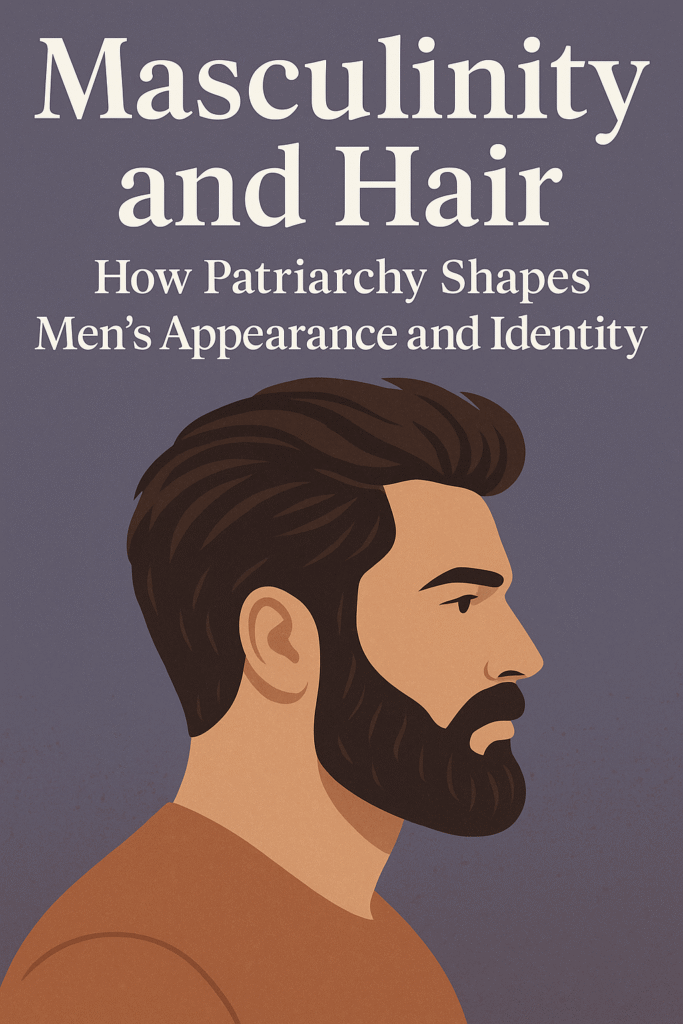INTRODUCTION
What does a man’s hair say about him? The answer is more revealing than it appears. In every age and society, hair has served as a symbol of power, control, rebellion, and conformity. From Viking warriors to Wall Street executives, from Sikh turbans to military buzz cuts, the way men wear their hair reflects the silent script of masculinity laid out by patriarchy. Yet, this is a script many have never read consciously—they simply perform it.
In a patriarchal society, masculinity is not a natural expression of identity but a coded performance, and hair is one of its loudest statements. This article explores how patriarchal norms shape male appearance and how hair becomes a battleground for control, conformity, and emotional suppression. It also questions the unspoken rules men live by: Why is baldness feared? Why are beards powerful? Why is grooming stigmatized? Through history, culture, religion, and modern media, we will examine the tangled roots of how patriarchy grooms men—both literally and figuratively.
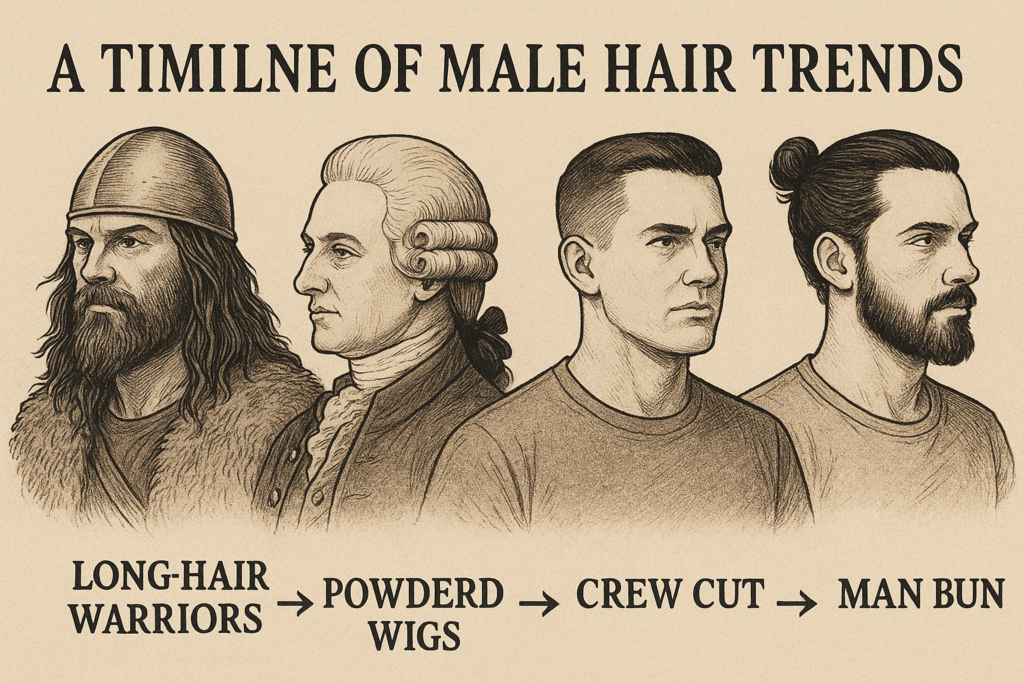
THE HISTORICAL ROOTS OF HAIR AND POWER
Hair has never been just a fashion choice. In ancient cultures, it was a statement of rank, identity, and honor. Among Native American tribes, long hair was considered a spiritual antenna to the divine. In ancient Egypt, wigs and shaved heads denoted social status. In the Roman Empire, facial hair was a political statement—Julius Caesar was famously clean-shaven to signify reason and order. By contrast, in medieval Europe, knights wore long hair and beards to symbolize strength and virility.
These styles were not simply preferences. They were part of a broader system that dictated how men must present themselves to wield power and be seen as legitimate in society. Over time, as patriarchy evolved into more rigid and industrialized forms, especially during colonialism and capitalism, male hair became standardized—short, controlled, and professional. The modern corporate look, clean-shaven with a tidy haircut, is not just about hygiene; it’s about submission to institutional power.
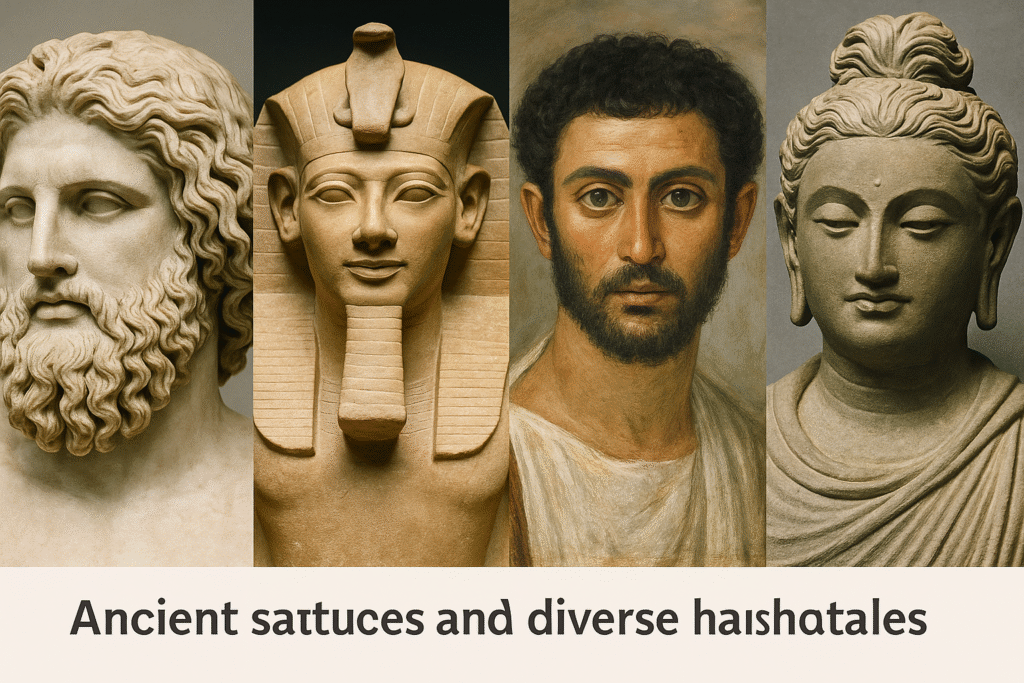
HAIR, MASCULINITY, AND PERFORMATIVE GENDER
Judith Butler famously argued that gender is performative—it is not something we are but something we do, over and over. Masculinity, therefore, is not a birthright but a series of actions, expressions, and styles that conform to societal expectations. Hair plays a key role in this ongoing performance.
- A full beard signifies ruggedness, maturity, and dominance.
- A clean-shaven face implies discipline, youth, and respectability.
- Baldness is often linked to either wisdom or a loss of desirability.
- Dyed or styled hair might be read as flamboyant, rebellious, or unmanly.
The act of choosing a hairstyle is rarely neutral. It is always loaded with connotations about class, race, sexuality, and social belonging. A man who chooses dreadlocks or a man bun might face different assumptions than a man with a military fade or corporate comb-over. The performance of masculinity through hair is often about proving one’s conformity to dominant standards while subtly policing others who deviate.
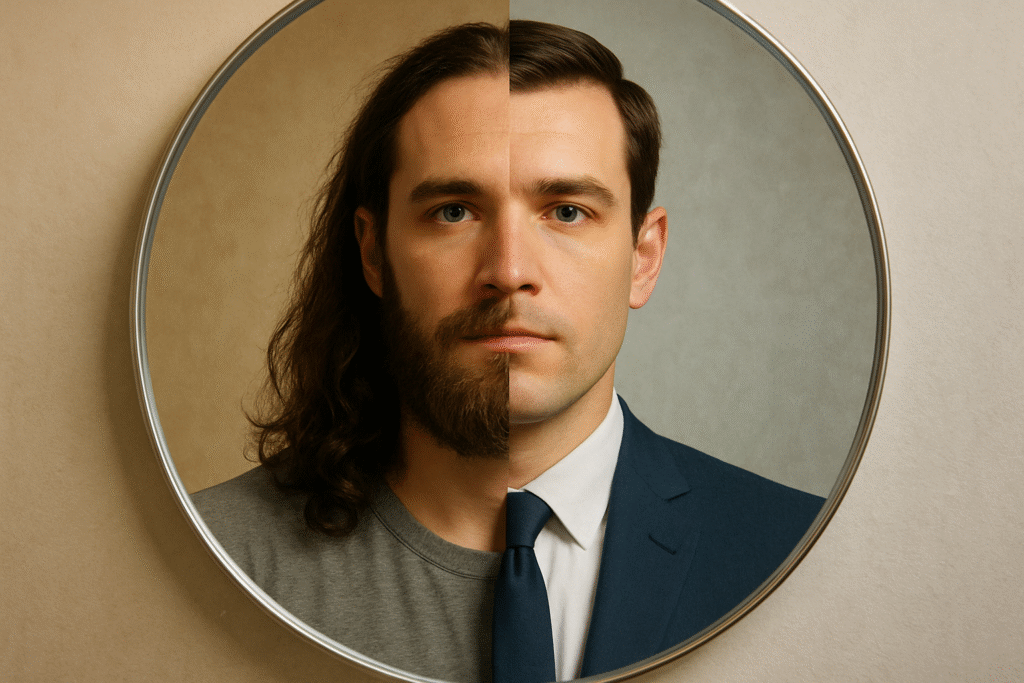
THE BALDING PARADOX: SHAME, CONTROL, AND COMMERCE
Hair loss is one of the most anxiety-inducing experiences for many men. More than 60% of men experience some form of balding by the age of 50, yet it remains a silent crisis. Under patriarchy, a full head of hair is associated with youth, sexual prowess, and vitality. Losing hair, then, becomes symbolic of failure—not just aesthetic loss but loss of manhood.
This stigma fuels a multi-billion-dollar industry of hair restoration, implants, pills, and topical solutions. The marketing around these products often plays into masculine insecurities: “Get your confidence back,” “Regain control,” “Be the man you were meant to be.”
What’s left unsaid is this: Why does hair equal confidence? Why must appearance determine worth? The answer lies in the patriarchal messaging that a man must always appear in control, even of nature itself.
BEARDS: SYMBOLS OF STRENGTH OR WEAPONS OF EXCLUSION?
Beards have re-emerged in recent decades as cultural markers. Once seen as wild or unkempt, beards today can signify a curated masculinity—the hipster, the lumberjack, the alpha male. But even the beard is racialized and classed:
- A white man with a beard is trendy or intellectual.
- A Black or Middle Eastern man with a beard might be seen as threatening.
- A queer man with a beard might be seen as ironic or provocative.
Patriarchy defines not just who can wear a beard but how it will be read depending on who wears it. The same hair on different faces can evoke admiration, suspicion, or ridicule. Thus, the beard is not just hair—it’s a social signifier controlled by systems of race, sexuality, and class.
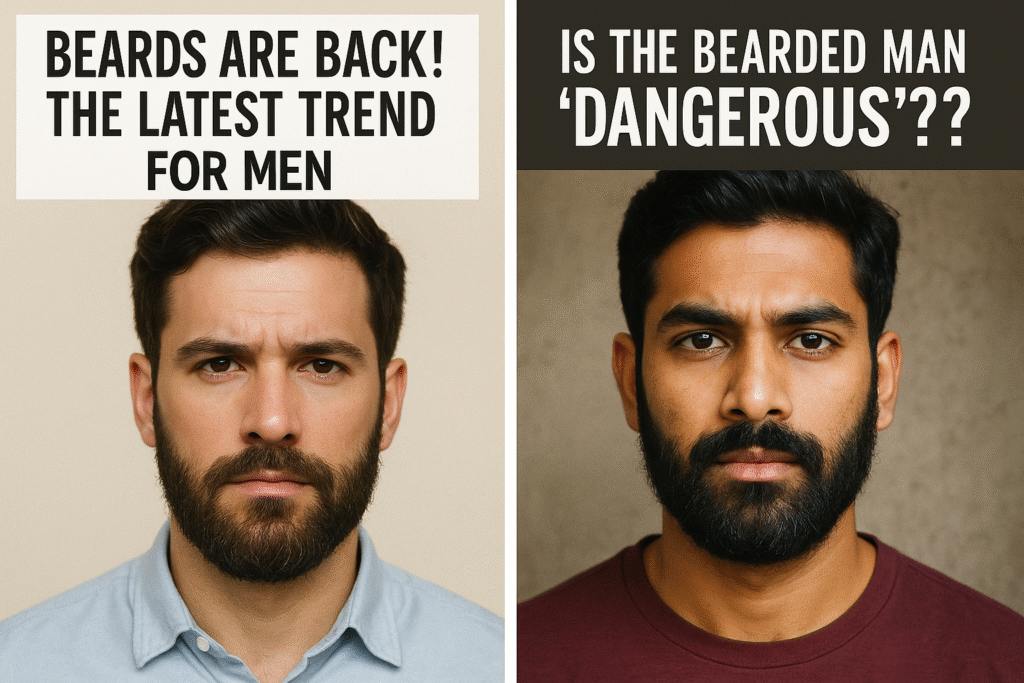
HAIR AND QUEER MASCULINITY
Hair can be a form of resistance for queer men who defy traditional gender roles. From colorful dye jobs to asymmetrical cuts, from facial hair paired with makeup to completely shaved heads—these choices challenge what “masculine” is supposed to look like. Yet, this often invites hostility.
In heteronormative culture, the line between masculinity and femininity is tightly policed. Men who cross that line with their hair are subjected to bullying, violence, or social exclusion. Even within the LGBTQ+ community, masculine-presenting styles are sometimes privileged over feminine ones.
Patriarchy fears fluidity. That’s why hair—as an immediate, visible form of expression—becomes one of its sharpest tools of control.
RELIGION, HAIR, AND SPIRITUAL MASCULINITY
In many religions, male hair is tied to obedience, humility, and spiritual identity. Consider:
- Sikh men who do not cut their hair as a form of devotion.
- Muslim men who maintain specific beard styles for religious observance.
- Buddhist monks who shave their heads to show detachment from ego.
- Orthodox Jewish men who grow sidelocks (payot) as a sign of tradition.
These practices can provide meaning and spiritual grounding. But when they clash with Western norms, men who follow them face discrimination, profiling, and exclusion. Once again, patriarchal systems dictate which types of spiritual masculinity are acceptable and which are marginal.
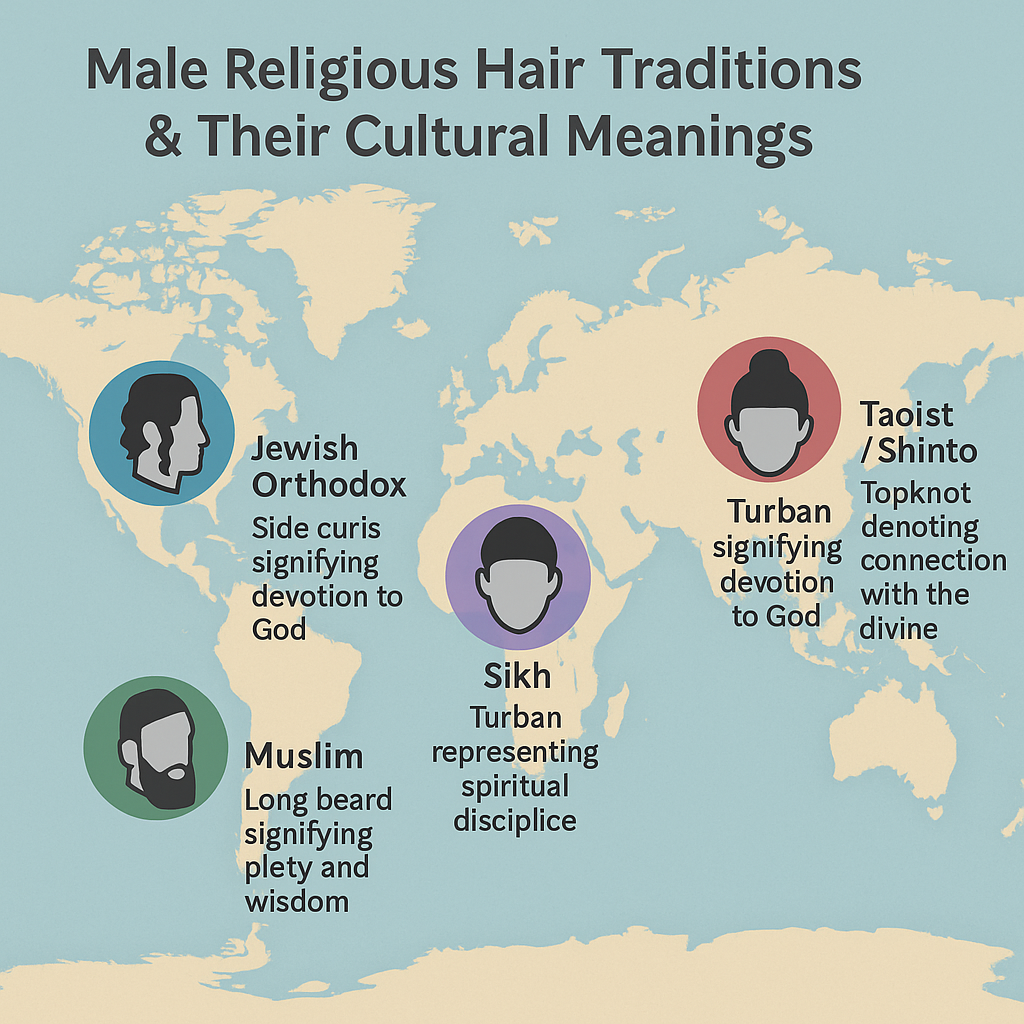
THE ROLE OF MEDIA IN HAIR MASCULINITY
Media plays a critical role in shaping hair ideals. From action heroes to presidents, male role models are rarely shown with unconventional hair. When they are, it’s either comic relief or villainous.
- James Bond: always clean-cut.
- Marvel heroes: styled but never too styled.
- Villains: unkempt or excessively groomed (see: The Joker vs. Lex Luthor).
Hair becomes part of a character’s morality, and young men absorb these cues. Commercials reinforce this by showing confident, desirable men with thick, shiny hair or perfect stubble.
This not only limits the range of acceptable male appearance but also contributes to a collective shame among men who don’t or can’t meet those standards.
HAIR AS RESISTANCE: MOVEMENTS AND REDEFINITIONS
In recent years, men have begun reclaiming hair as a space for vulnerability, expression, and resistance:
- Natural hair movements among Black men rejecting Eurocentric styles.
- Trans men navigating hair loss during hormone therapy.
- Indigenous men growing hair long as cultural reclamation.
- Young boys painting their nails and dyeing their hair as acts of joy.
These actions defy patriarchal definitions of what it means to be a man. They say, in effect: “I am not my haircut. I am not my beard. I am not your idea of a man.”
Such reclamations are powerful precisely because they challenge the core of patriarchal aesthetics: control through conformity.
CONCLUSION: UNGROOMING THE FUTURE
Hair may seem trivial, but it is deeply political. For men, it is often the first place where masculinity is imposed and policed. Whether it’s through shame over baldness, anxiety over grooming, or fear of judgment, patriarchal norms use hair to mold men into rigid boxes.
To free men, we must also free their hair. That means letting go of narrow definitions and embracing diverse, fluid, and self-chosen expressions. It means creating cultures where a man can wear pink curls or go fully bald without it being a moral or masculine crisis.
The real revolution is not in the scissors or the comb, but in the mind. When men begin to question why they style their hair the way they do, they also begin to question the deeper myths of what it means to be a man.
And perhaps, in that unravelling, we find space to grow.

